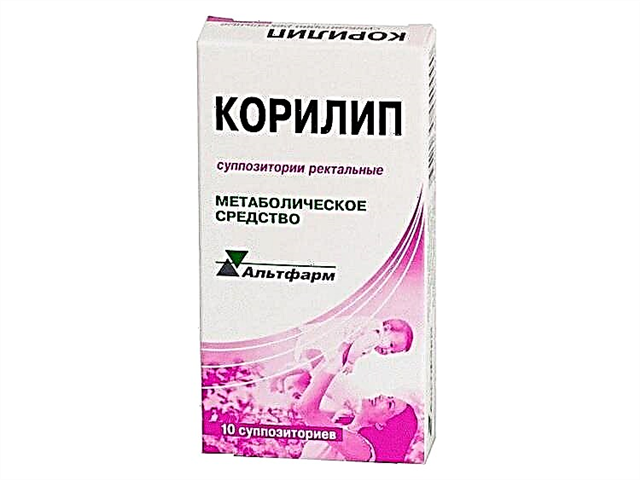A runny nose is a sign of diseases of various origins and allergies. Any cold in a child becomes a cause of concern for parents. They make attempts to carefully protect the baby from negative external influences. But is there a need to stop walking with rhinitis?
A runny nose (rhinitis) is a very common problem in children. The nasal mucosa is a barrier to the entry of pathogens. There are special villi in the nasal cavity, they stop microorganisms and dust that enter the body with the air. And when immunity is lowered, and there are a lot of viruses and bacteria in the nose, then the body starts its own defense mechanism. This is how a runny nose develops - an inflammation of the nasal mucosa. Rhinitis can occur as an independent disorder or be a manifestation of a disease (for example, ARVI).
If you do not have the time or opportunity to read the entire article, watch the video on this topic:
It happens that a runny nose is not associated with bacteria or viruses, it is a manifestation of a normal physiological process aimed at cleansing the nasal cavity. Infants often develop rhinitis due to dry, stale, stale air.
An allergic response of the body is one of the causes of the common cold. In this case, it is required to identify what provoked the reaction. It can be food, plant pollen, animal hair.
To correctly identify the cause of rhinitis in a child, you should show it to your doctor. It is preferable to call a specialist at home, since in a medical institution, a baby can become infected with an infection from sick people.

Walking allowed?
A simple runny nose disappears in a couple of days if the treatment is organized correctly. In children, rhinitis is not a serious disorder, but it causes many inconveniences: loss of appetite, sleep disturbance, deterioration in general mood. In order to protect the baby from the complicating factors of the disease, parents stop daily walks. Is this justified?
Experienced pediatricians say that walking with a cold is possible, however, certain factors should be taken into account:
- what the child is sick with;
- the general condition of the baby;
- weather conditions;
- means and methods of treatment;
- organization of the walk.
The most important point that should be taken into account is the well-being of the child as a whole. It is recalled to take the exhausted child for a walk during the acute stage of the disease.
The benefits of walking
The problem is that a large number of parents do not realize the true benefits of walking when sick. At this time, changing the environment, playing on the court, communicating with peers are not the purpose of being on the street. At the moment, all that should be concerned about moms and dads is the speedy recovery of their child.
At birth, the infant's respiratory system is still far from perfect. Features of its structure include:
- Compared to adults, babies have narrow lumens and tiny respiratory organs;
- the mucous membrane is overly tender;
- soft cartilage;
- there is no elastic fabric.
Also, in infants, the organs of the respiratory system work differently, and this is manifested in irregular, frequent shallow breathing.
Fresh air is vital for small children due to the insufficient development of the respiratory system. It helps cleanse the respiratory tract from dust, moisturize the mucous membrane, saturate the blood with oxygen, which in turn activates all body systems, improves appetite and sleep, and strengthens the immune system. This leads to healthy growth and development of the child.
An adult makes about 20 thousand breathing cycles (inhalation - exhalation) per day, and about 8 million per year. And the respiratory rate of a newborn is 2 times higher, and it gradually decreases, reaching an adult indicator by the age of 12.
In winter, you should not be afraid to take a child with a runny nose to the street due to subzero temperatures. The main condition is the absence of snow, since the walk will not bring either pleasure or benefit.
For a child with rhinitis, calm and quiet walks are recommended. Therefore, you should not walk with your baby when he is not able to sit still. Dynamic games and running can aggravate the situation, as the child will sweat and overheat, and then get hypothermic, and the nasal mucous membranes will dry out rather than moisturize. With rhinitis, such overloads will postpone recovery.
When the child is calm, you can spend half an hour in the fresh air. A walk in sunny, dry weather will be useful for the baby - ultraviolet rays destroy pathogens, which brings recovery closer.

The right place to walk
For a walk with a child, you should make the right choice of place in order to achieve maximum benefits. The main conditions are a large number of green spaces and remoteness from roads. In these areas, there is a lot of oxygen required by a child with rhinitis.
You should definitely avoid crowded places (transport, shops, etc.), contact with other children is also not encouraged. This is due to the fact that the children's defense system is in the mode of fighting rhinitis, the child's body is vulnerable to other unwanted microorganisms.
Any green tree is a source of oxygen, but conifers should be especially noted. They secrete phytoncides - biologically active substances that kill harmful microorganisms.
If there are coniferous plantings near your area of residence, then this will be the best place to walk with a child with rhinitis.
Researchers have found that there are only 200-300 harmful organisms per cubic meter in the air of a coniferous forest. This air is almost sterile compared to the urban air, which contains millions of pathogens.

Contraindications to walking with a cold
There are conditions when the walk should be postponed. You must wait if:
- rhinitis is a consequence of an allergic reaction, and pollen of flowers, poplar fluff, etc. act as irritants. humidifier, wet towels on the battery), so as not to aggravate the situation;
- the child has a severe fever. Everyone understands that a walk with this symptom at any time of the year is contraindicated. However, this issue sometimes becomes the subject of discussion. For example, when in hot summer weather the stone walls of a house heat up to 40 ° C, and at the same time in the shade under a tree you can find a comfortable place with a temperature of +25 ° C, this will lead to an improvement in the child's well-being;
- there is a bad ecological situation. You should cancel the walk if there is a plant in the area of residence that regularly pollutes the air with emissions. Staying on the street will not bring a positive result, and the nasal mucosa will be irritated even more;
- there are certain diseases of the respiratory system: sinusitis, diphtheria, tonsillitis, etc.
- at home for recovery there are all the necessary conditions. When a child has his own room, where other family members do not yet live, and the temperature and humidity in it are maintained at an optimal level, this is equivalent to being in the fresh air.

If a baby has a wet cough attack while walking, then this is not a reason to end the walk. This manifestation does not indicate a deterioration in the child's condition. On the contrary, coughing helps to release the accumulated phlegm from the airways, and this brings recovery closer.
Rules for organizing a walk with a cold
For the speedy recovery of the child, it is necessary to properly organize the walk.
- Clothes should be comfortable. Don't mess up your baby. Dress it according to the weather conditions. He should not be hot or cold.
- Try to spend time calmly outside. When rhinitis, the child is not recommended to run and jump. It will be useful to calmly walk in the park in the fresh air.
- With communication with peers and visiting crowded places, it is better to wait until absolute recovery. There is a risk that the child will infect others, and also pick up some kind of infection, since with rhinitis, the immune system is reduced.
- Cancel your walk if it's raining or damp, windy weather. Such weather conditions are unfavorable for inflamed mucous membranes, and, on the contrary, lead to profuse mucus secretion.
- Don't walk for long. Weather permitting, in summer 1 hour will be enough for a walk to be useful. In winter, during frosty seasons, stay outside should be limited to 20 - 30 minutes.
- Thoroughly empty the child's nasal cavity from mucus before going outside. This will allow him to breathe freely through his nose, otherwise breathing will be carried out through his mouth, which is unacceptable in frosty winter.
The younger the crumb, the more favorable the walk affects it. For babies, walking is essentially just a nap in the fresh air. As a child grows up, the number of aspects that should be considered before a walk increases.
Conclusion
Rhinitis is not a reason to cancel a walk, but when a runny nose is accompanied by fever, cough, lethargy and other manifestations of ARVI, then in this case it is contraindicated to go outside. The final decision will also be influenced by weather conditions. Walk with your child as often as possible, as being in the fresh air will benefit both infants and older children. The most important thing is to follow simple rules. Only then will the walk be useful and enjoyable.



